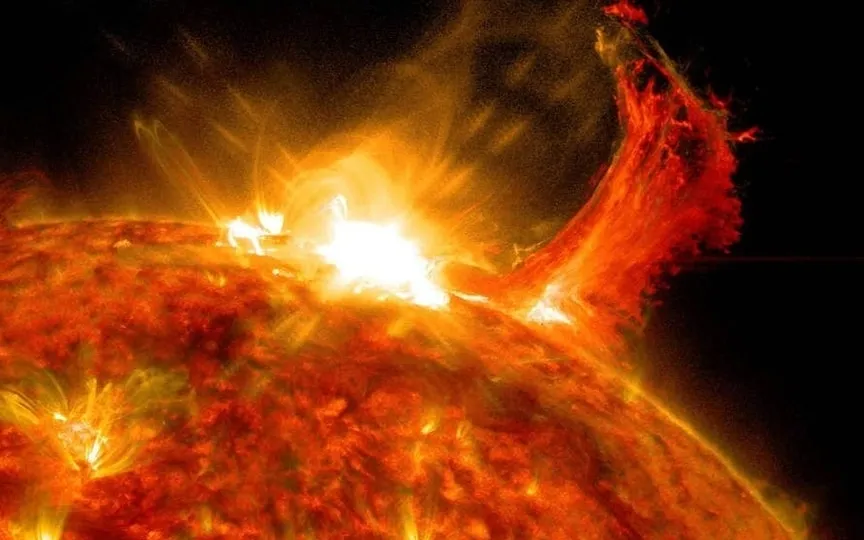Exploring the Effects of Solar Radiation Storms on Earth
Occasionally, reports surface regarding solar storms and solar flares emitted by the Sun and their effects on Earth, such as disruptions to satellites and power grids. However, are you familiar with solar radiation storms? Prior to delving into this concept, let’s first understand what solar storms and solar flares entail.
NASA describes a solar flare as a powerful burst of radiation caused by the release of magnetic energy from sunspots. Solar storms, on the other hand, refer to the atmospheric consequences on Earth of space events such as coronal mass ejections and solar flares originating from the Sun.
What is a solar radiation storm?
The Space Weather Prediction Center reports that solar radiation storms are large-scale magnetic eruptions that cause coronal mass ejections (CMEs) and associated solar flares. As a result of this phenomenon, charged particles in the sun’s atmosphere are accelerated to very high speeds.
A proton is a particle that accelerates at a high speed, equal to the speed of light. At such high speeds, these accelerated protons travel 150 million kilometers from the sun to Earth in a few minutes. These protons then strike the Earth’s magnetosphere and are then directed down the magnetic field lines, they begin to affect the atmosphere near the North and South Poles.
How are solar radiation storms classified?
According to SWPA, the NOAA Space Weather Scale has classified these storms as S1 through S5. Type S1 means a small radiation storm, while S5 is a warning sign or when 100 MeV protons reach one proton flux unit (pfu). A solar radiation storm can last from a few hours to several days.
Impact of solar radiation storms on Earth
Solar radiation storms can cause shocks near the Earth. Accelerated protons can damage satellites and deliver high doses of radiation to humans in space (think the International Space Station), damaging electronic circuits and biological DNA. Also, when energetic protons collide in the atmosphere, they ionize atoms, producing free electrons that create a radio-wave-absorbing layer in the ionosphere, blocking radio communications on Earth.




